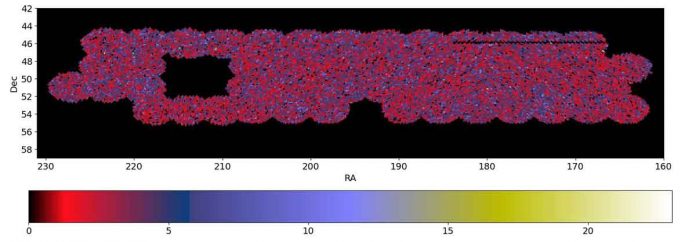A research team led by Dr. Zhao Gongbo from the National Astronomical Observatories of the Chinese Academy of Sciences (NAOC) investigated the large-scale structure distribution of radio galaxies observed by the Low-Frequency Array telescope (LOFAR). This could help to better understand the clustering property of these galaxies. The study was published in The Astrophysical Journal.
The matter density of the universe is dominated by cold dark matter. The formation and evolution of galaxies occur inside these dark matter halos. The mass and evolution of the host halo are correlated with the evolution and type of galaxy residing inside.
The astronomers describe the relationship between the spatial distribution of galaxies and the underlying dark matter density field. Measuring the bias of radio galaxies can help us understand their formation and evolution history.
The LOFAR Two-meter Sky Survey (LoTSS) is an ongoing sensitive and high-resolution survey of the northern sky. This is a factor 10 more sensitive than the current best high-resolution sky survey. It will detect over 10 million radio sources.
Radio-loud AGNs are found to reside in more massive halos than optical AGNs. The radio surveys sample galaxies with higher bias as compared with optical observations. Thus, complement existing and upcoming visible galaxy surveys. LoTSS provides a new perspective for studying the large-scale structure of the universe.
Scientists systematically studied and processed LoTSS DR1’s catalog. They selected over 100,000 sources for clustering analysis. LoTSS DR1 catalog contains a significant number of multi-component sources. Scientists took this effect into account when interpreting the measured angular power spectrum.
They obtained the constraints on the radio galaxy bias, by using the standard model of cosmology and employing the Monte Carlo Markov chain method.

